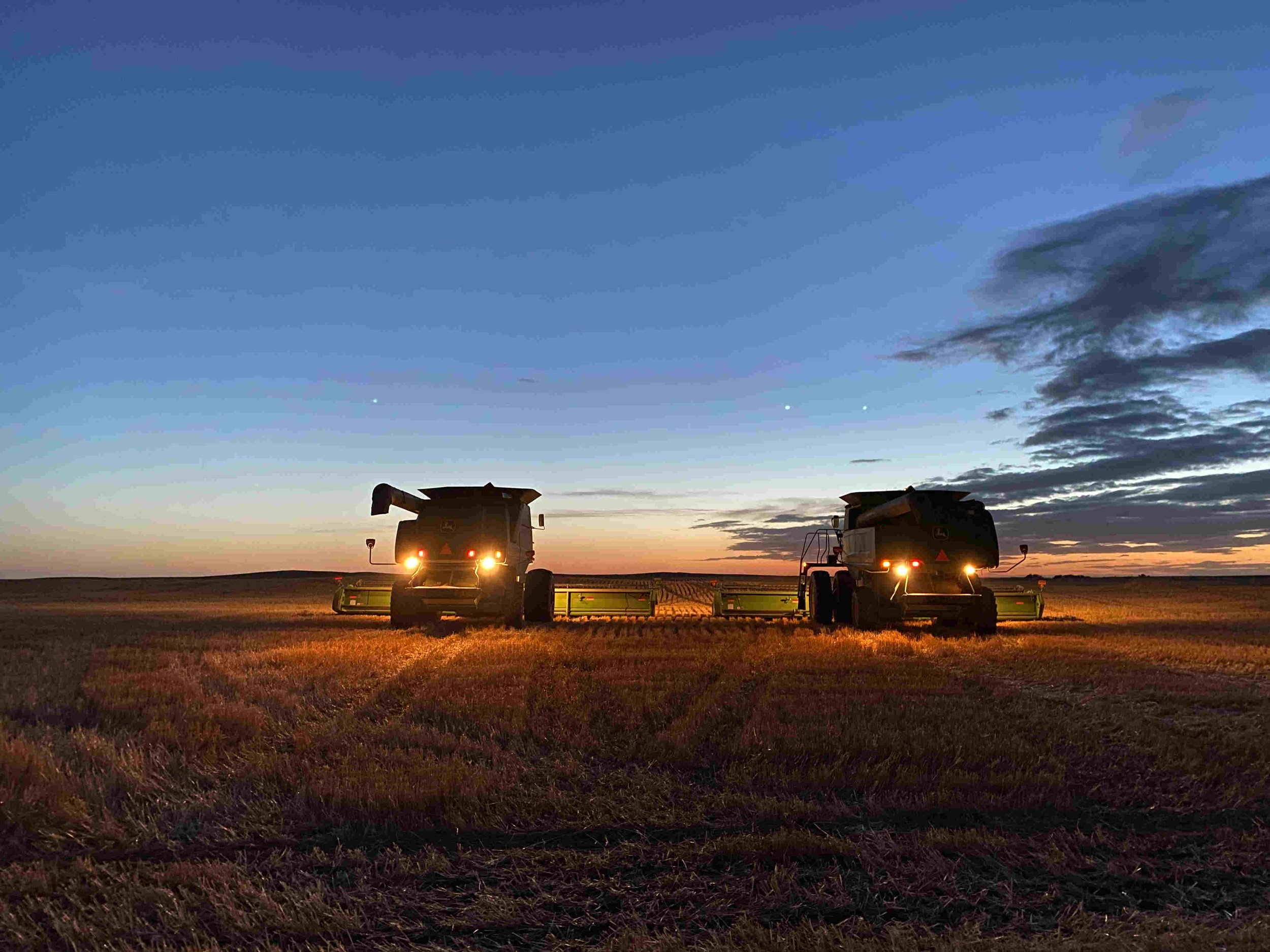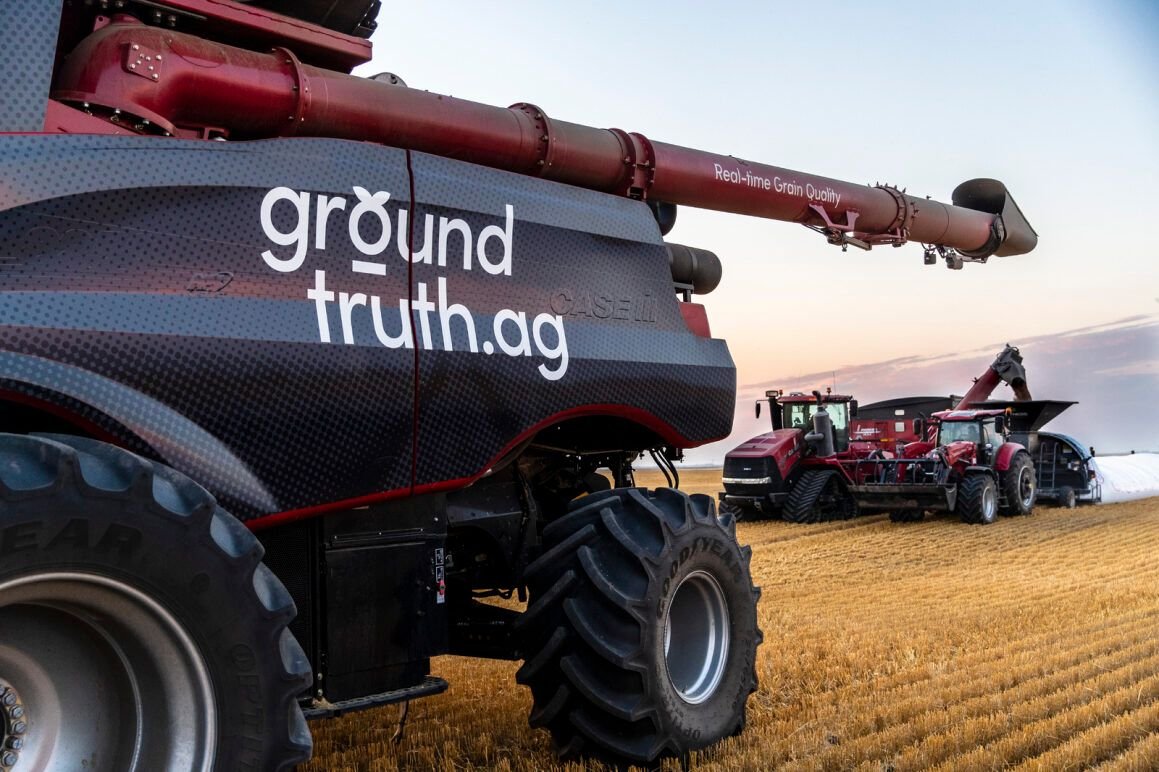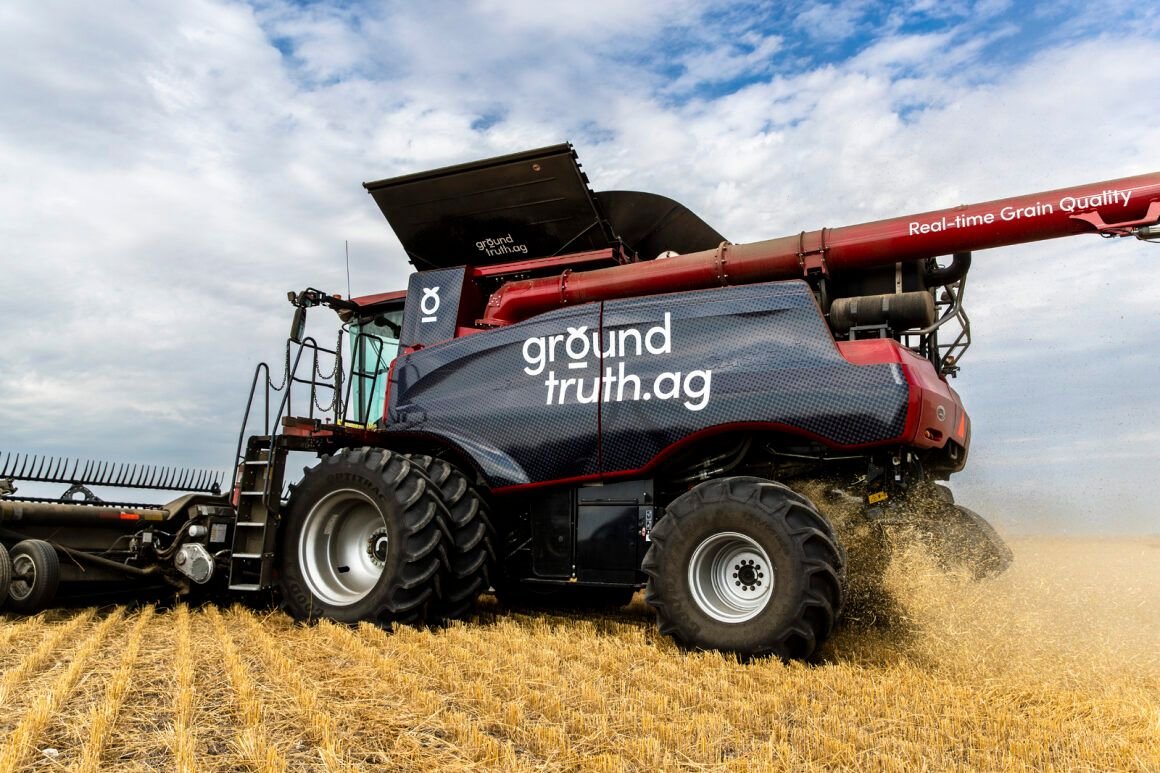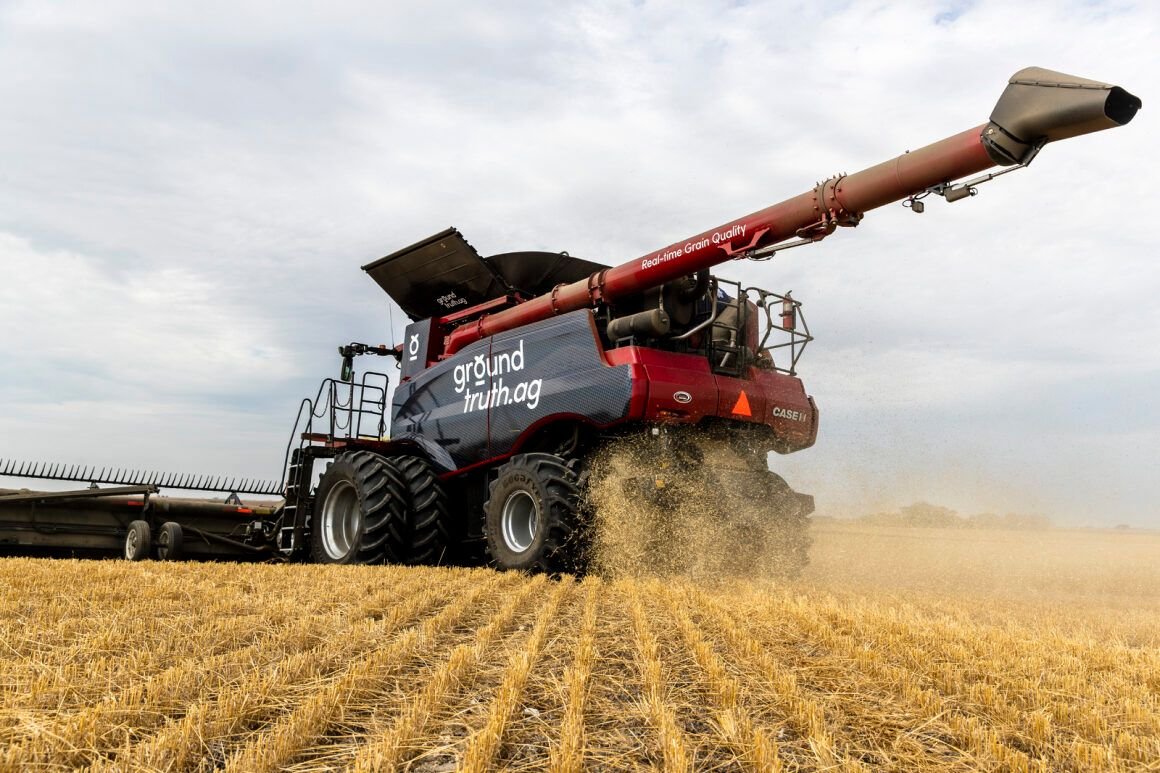Fifth generation farmer field tests Ground Truth Ag’s on-combine prototype
Ground Truth Ag sits down with Fahlman Acres’ owner and operator, Brady Fahlman, to talk about his experiences testing our company’s on-combine grain grading prototype during this year’s harvest.
Fifth generation farmer field tests Ground Truth Ag’s on-combine prototype
Ground Truth Ag sat down with Fahlman Acres’ owner and operator, Brady Fahlman, to talk about his experiences testing our company’s on-combine grain grading prototype during this year’s harvest.
“I’m very proud that I’m the fifth generation to farm my family’s original homestead,” Fahlman says. Located outside of Holdfast, Saskatchewan, the farm dates back to 1904 and has grown into a 13,000-acre operation that produces canola, yellow peas, red lentils and Canadian red spring wheat.
While his family farm is grounded in its history, Fahlman is looking ahead towards new innovations and technologies to adopt into his operations. Fahlman Acres is a testing partner for multiple companies, including Ground Truth Ag.
“Becoming a test partner has allowed us access to engineers and product developers,” Fahlman explains. “We try to take advantage of that and learn as much as we can from them. It helps us understand the product at a much deeper level – and that will help us get new technologies that fit within our operation onto our farm faster.”
Fahlman was pleased with how the Ground Truth Ag field trials went.
“Overall, I would say it was successful,” Fahlman states. “By the middle of harvest, we were getting used to it and looking at some of the camera images coming in as we were going through different areas of the field so I could wrap my head around how we can implement this into our operation.”
When Ground Truth Ag first approached Fahlman to test their prototype, he was initially interested from an agronomy perspective.
“We are very focused on our agronomy – and using technology and the data it provides us to make stronger management decisions,” Fahlman answers. “I looked at the agronomy information it could give us and how it could help prove out some of the top dressing that we’re doing and some of our variable rate applications.”
He also sees the data being helpful when it comes to the farm’s marketing efforts.
“I also was very interested in what kind of data we can get in real time and seeing those grading factors immediately. We’re going to know exactly what’s in each bin and have a higher level of confidence in what we have and our ability to market it,” Fahlman explains. “I saw the benefit of being able to get a grade while I’m in the field on the combine. Being able to send either images or a map of a field to an elevator will simplify and streamline things. We also can bin separately for marketing purposes.”
Now that harvest is over and Fahlman is deep into planning for the next growing season, he anticipates more uses for the data.
“As we are analysing our outcomes this winter, we are looking to prove out some agronomy decisions. The more information we can get and the more advanced that information is, the more things are going to come to light in terms of what we are missing. For every piece of tech that we’ve tested on our farm, we start out seeing a couple of uses for it in our operations – and down the road find three, four or five more uses to improve our operations.”
Fahlman ends the interview, stating that he’s looking forward to having an advanced model on his combine again next year.
“We need to have more confidence in what’s in our bins and what we’re marketing. And from the agronomy perspective, I love test plots and pushing the limits - what we can grow and what crops react to what fertilizer. Having a complete picture of grain quality information will be so important.”







